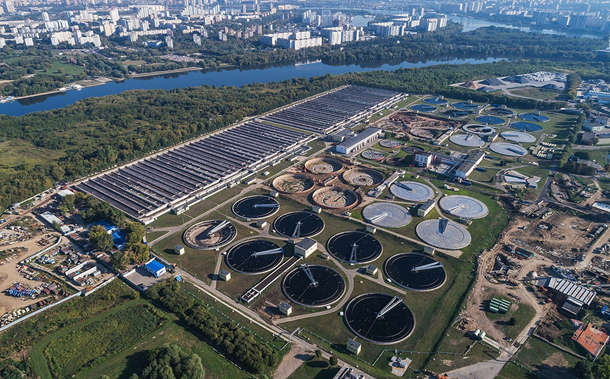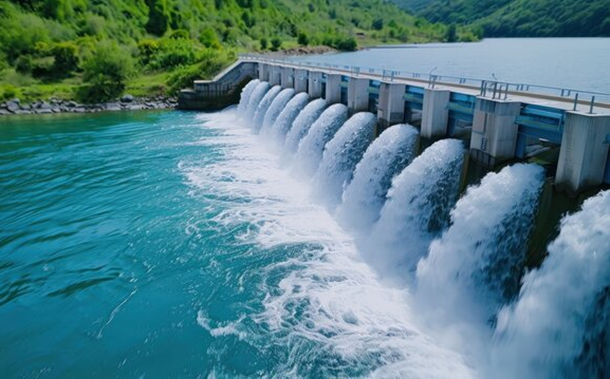Landslide Susceptibility Assessment in Western External Rif Chain using Machine Learning Methods
Downloads
Doi:10.28991/CEJ-2023-09-12-018
Full Text:PDF
Downloads
[2] Millies-Lacroix, A. (1968). Les glissements de terrains. Présentation d'une carte prévisionnelle des mouvements de masse dans le Rif (Maroc septentrional). Mines et Géologie, 27, 45–55.
[3] Rouai, M., & Jaaidi, E. B. (2003). Scaling properties of landslides in the Rif mountains of Morocco. Engineering Geology, 68(3-4), 353-359. doi:10.1016/S0013-7952(02)00237-5.
[4] Fonseca, A. (2014). Large deep-seated landslides in the northern Rif Mountains (Northern Morocco): inventory and analysis. Geological Society, London, Special Publications, 408, 195.
[5] El Kharim, Y. (2012). Geological features of the slope instability in Tetouan region (the northern Rif, Morocco). Boletín de la RSEHN. Sección Geológica, 106, 39–52.
[6] El Kharim, Y., Bounab, A., Ilias, O., Hilali, F., & Ahniche, M. (2021). Landslides in the urban and suburban perimeter of Chefchaouen (Rif, Northern Morocco): inventory and case study. Natural Hazards, 107(1), 355–373. doi:10.1007/s11069-021-04586-z.
[7] Sahrane, R., El Kharim, Y., & Bounab, A. (2022). Investigating the effects of landscape characteristics on landslide susceptibility and frequency-area distributions: the case of Taounate province, Northern Morocco. Geocarto International, 37(27), 17686–17712. doi:10.1080/10106049.2022.2134462.
[8] Bounab, A., Agharroud, K., El Kharim, Y., El Hamdouni, R., & Faghloumi, L. (2022). The importance of investigating causative factors and training data selection for accurate landslide susceptibility assessment: the case of Ain Lahcen commune (Tetouan, Northern Morocco). Geocarto International, 37(25), 9967–9997. doi:10.1080/10106049.2022.2028905.
[9] Sahrane, R., Bounab, A., & EL Kharim, Y. (2023). Investigating the effects of landslides inventory completeness on susceptibility mapping and frequency-area distributions: Case of Taounate province, Northern Morocco. Catena, 220, 106737. doi:10.1016/j.catena.2022.106737.
[10] Merghadi, A., Yunus, A. P., Dou, J., Whiteley, J., ThaiPham, B., Bui, D. T., ... & Abderrahmane, B. (2020). Machine learning methods for landslide susceptibility studies: A comparative overview of algorithm performance. Earth-Science Reviews, 207, 103225. doi:10.1016/j.earscirev.2020.103225.
[11] Ado, M., Amitab, K., Maji, A. K., Jasińska, E., Gono, R., Leonowicz, Z., & Jasiński, M. (2022). Landslide Susceptibility Mapping Using Machine Learning: A Literature Survey. Remote Sensing, 14(13), 3029. doi:10.3390/rs14133029.
[12] Hussain, M. A., Chen, Z., Wang, R., Shah, S. U., Shoaib, M., Ali, N., Xu, D., & Ma, C. (2022). Landslide Susceptibility Mapping using Machine Learning Algorithm. Civil Engineering Journal (Iran), 8(2), 209–224. doi:10.28991/CEJ-2022-08-02-02.
[13] Rabby, Y. W., Hossain, M. B., & Abedin, J. (2022). Landslide susceptibility mapping in three Upazilas of Rangamati hill district Bangladesh: application and comparison of GIS-based machine learning methods. Geocarto International, 37(12), 3371–3396. doi:10.1080/10106049.2020.1864026.
[14] Chalouan, A., Michard, A., Feinberg, H., Montigny, R., & Saddiqi, O. (2001). The Rif mountain building (Morocco); A new tectonic scenario. Bulletin de La Société Géologique de France, 172(5), 603–616. doi:10.2113/172.5.603.
[15] Suter, G. (1980a). Carte géologique de la Chaine Rifaine, échelle 1:500.000. Ministère de l'Energie et des Mines du Maroc, Direction de la Gélogie, Rabat. Notes et Mem. du Service Geol. du Maroc, 245a.
[16] Suter, G. (1980b). Carte structurale du Maroc, échelle 1:500.000. Ministère de l'Energie et des Mines du Maroc, Direction de la Géologie, Rabat. Notes et Mem. du Service Geol. du Maroc, 245b.
[17] Chalouan, A., & Michard, A. (2004). The Alpine Rif belt (Morocco): A case of mountain building in a subduction-subduction-transform fault triple junction. Pure and Applied Geophysics, 161(3), 489–519. doi:10.1007/s00024-003-2460-7.
[18] Kornprobst, J. (1971). Contribution a l'étude pétrographique et structurale de la zone interne du Rif. Notes et Mémoires Du Service Géologique, Maroc, 251, 1–376.
[19] De Lamotte, D. F., Bezar, B. Saint, Bracène, R., & Mercier, E. (2000). The two main steps of the atlas building and geodynamics of the Western Mediterranean. Tectonics, 19(4), 740–761. doi:10.1029/2000TC900003.
[20] Michard, A. (1976). Eléments de Géologie Marocaine. Notes et Mémoires du Service Géologique du Maroc, 252.
[21] Bargach, K., Galindo-Zaldívar, J., Galdeano, C., & Akil, M. (2023). Tectonic interpretation of late Cenozoic faulting and stress field evolution in the Rif Mountains, Morocco. Tectonophysics, 340(3–4), 151–169. doi:10.1016/S0040-1951(01)00151-0.
[22] Mhammdi, N. A. (1991). Evolution tectonique Néogène et Quaternaire des zones externes de la région du Rif septentrional (Rif Nord-Oriental, Maroc). Ph.D. Thesis, Université Mohamed V, Rabat, Morocco.
[23] ABHL. (2023). Agence Tétouan du Bassin Hydraulique du Loukkos, Tétouan, Morocco. Available online: https://abhl.ma/ (accessed on July 2023).
[24] Rabby, Y. W., Ishtiaque, A., & Rahman, M. S. (2020). Evaluating the effects of digital elevation models in landslide susceptibility mapping in rangamati district, Bangladesh. Remote Sensing, 12(17), 2718. doi:10.3390/RS12172718.
[25] Gaidzik, K., & Ramírez-Herrera, M. T. (2021). The importance of input data on landslide susceptibility mapping. Scientific Reports, 11(1). doi:10.1038/s41598-021-98830-y.
[26] Chen, C. W., Chen, H., Wei, L. W., Lin, G. W., Iida, T., & Yamada, R. (2017). Evaluating the susceptibility of landslide landforms in Japan using slope stability analysis: a case study of the 2016 Kumamoto earthquake. Landslides, 14(5), 1793–1801. doi:10.1007/s10346-017-0872-1.
[27] Althuwaynee, O. F., Pradhan, B., Park, H. J., & Lee, J. H. (2014). A novel ensemble bivariate statistical evidential belief function with knowledge-based analytical hierarchy process and multivariate statistical logistic regression for landslide susceptibility mapping. Catena, 114, 21–36. doi:10.1016/j.catena.2013.10.011.
[28] Chen, W., Xie, X., Peng, J., Shahabi, H., Hong, H., Bui, D. T., ... & Zhu, A. X. (2018). GIS-based landslide susceptibility evaluation using a novel hybrid integration approach of bivariate statistical based random forest method. Catena, 164, 135-149. doi:10.1016/j.catena.2018.01.012.
[29] Breiman, L. (2001). Random forests. Machine Learning, 45(1), 5–32. doi:10.1023/A:1010933404324.
[30] Liaw, A., & Wiener, M. (2002). Classification and Regression by Random Forest. R News, 2(3), 18-22.
[31] Nouh, R. M., Lee, H. H., Lee, W. J., & Lee, J. D. (2019). A smart recommender based on hybrid learning methods for personal well-being services. Sensors (Switzerland), 19(2), 431. doi:10.3390/s19020431.
[32] Marjanović, M., Bajat, B., & KovaÄević, M. (2009). Landslide susceptibility assessment with machine learning algorithms. International Conference on Intelligent Networking and Collaborative Systems, 273–278. doi:10.1109/INCOS.2009.25.
[33] Kuhn, M. A. (2013). Short Introduction to the caret Package. The Comprehensive R Archive Network, 1-10. Available online: https://cran.r-project.org/web/packages/caret/vignettes/caret.html (accessed online July 2023).
[34] Chen, T., & Guestrin, C. (2016). XGBoost: A scalable tree boosting system. Proceedings of the ACM SIGKDD International Conference on Knowledge Discovery and Data Mining, 13-17-August-2016, 785–794. doi:10.1145/2939672.2939785.
[35] Cao, J., Zhang, Z., Du, J., Zhang, L., Song, Y., & Sun, G. (2020). Multi-geohazards susceptibility mapping based on machine learning”a case study in Jiuzhaigou, China. Natural Hazards, 102(3), 851–871. doi:10.1007/s11069-020-03927-8.
[36] Van Westen, C. J., Rengers, N., & Soeters, R. (2003). Use of geomorphological information in indirect landslide susceptibility assessment. Natural Hazards, 30, 399-419. doi:10.1023/B:NHAZ.0000007097.42735.9e.
[37] Pham, B. T., Prakash, I., Dou, J., Singh, S. K., Trinh, P. T., Tran, H. T., Le, T. M., Van Phong, T., Khoi, D. K., Shirzadi, A., & Bui, D. T. (2020). A novel hybrid approach of landslide susceptibility modelling using rotation forest ensemble and different base classifiers. Geocarto International, 35(12), 1267–1292. doi:10.1080/10106049.2018.1559885.
[38] Bui, D. T., Lofman, O., Revhaug, I., & Dick, O. (2011). Landslide susceptibility analysis in the Hoa Binh province of Vietnam using statistical index and logistic regression. Natural hazards, 59, 1413-1444. doi:10.1007/s11069-011-9844-2.
[39] Yu, X., Zhang, K., Song, Y., Jiang, W., & Zhou, J. (2021). Study on landslide susceptibility mapping based on rock–soil characteristic factors. Scientific Reports, 11(1), 15476. doi:10.1038/s41598-021-94936-5.
[40] Li, Y., Zhang, H., Huang, L., Li, H., & Wu, X. (2023). The formation mechanism of landslides in typical fault zones and protective countermeasures: A case study of the Nanpeng River fault zone. Frontiers in Earth Science, 10, 1-11. doi:10.3389/feart.2022.1092662.
[41] Harris, I., Osborn, T. J., Jones, P., & Lister, D. (2020). Version 4 of the CRU TS monthly high-resolution gridded multivariate climate dataset. Scientific Data, 7(1), 109. doi:10.1038/s41597-020-0453-3.
[42] Dai, X., Zhu, Y., Sun, K., Zou, Q., Zhao, S., Li, W., Hu, L., & Wang, S. (2023). Examining the Spatially Varying Relationships between Landslide Susceptibility and Conditioning Factors Using a Geographical Random Forest Approach: A Case Study in Liangshan, China. Remote Sensing, 15(6), 1513. doi:10.3390/rs15061513.
[43] Rabby, Y. W., Li, Y., Abedin, J., & Sabrina, S. (2022). Impact of Land Use/Land Cover Change on Landslide Susceptibility in Rangamati Municipality of Rangamati District, Bangladesh. ISPRS International Journal of Geo-Information, 11(2), 89. doi:10.3390/ijgi11020089.
[44] Chowdhury, M. S. (2023). A review on landslide susceptibility mapping research in Bangladesh. Heliyon, 9(7), e17972. doi:10.1016/j.heliyon.2023.e17972.
[45] Khalil, U., Imtiaz, I., Aslam, B., Ullah, I., Tariq, A., & Qin, S. (2022). Comparative analysis of machine learning and multi-criteria decision making techniques for landslide susceptibility mapping of Muzaffarabad district. Frontiers in Environmental Science, 10, 1028373. doi:10.3389/fenvs.2022.1028373.
[46] Pourghasemi, H. R., & Kerle, N. (2016). Random forests and evidential belief function-based landslide susceptibility assessment in Western Mazandaran Province, Iran. Environmental Earth Sciences, 75(3), 1–17. doi:10.1007/s12665-015-4950-1.
- Authors retain all copyrights. It is noticeable that authors will not be forced to sign any copyright transfer agreements.
- This work (including HTML and PDF Files) is licensed under a Creative Commons Attribution 4.0 International License.![]()














